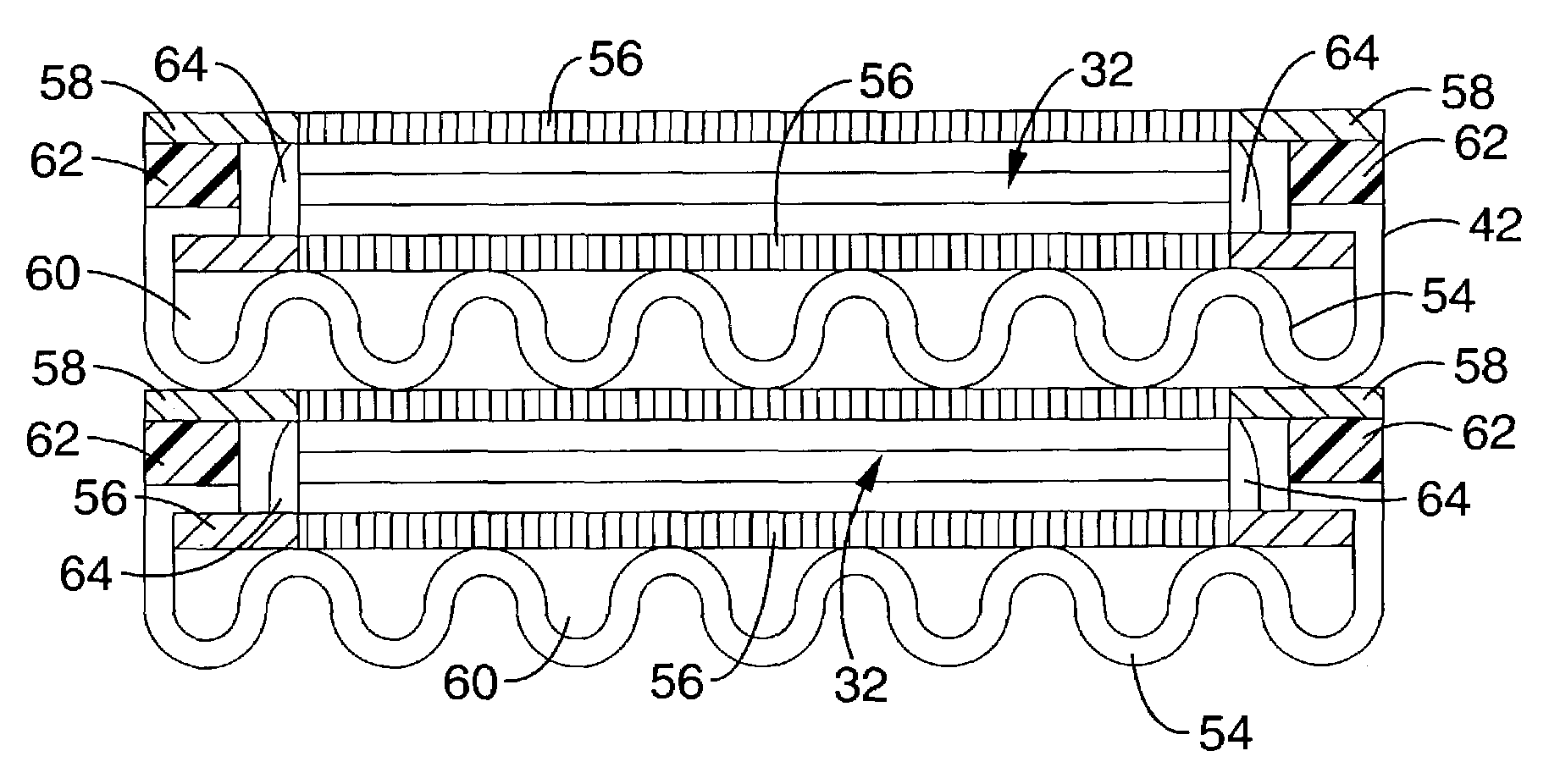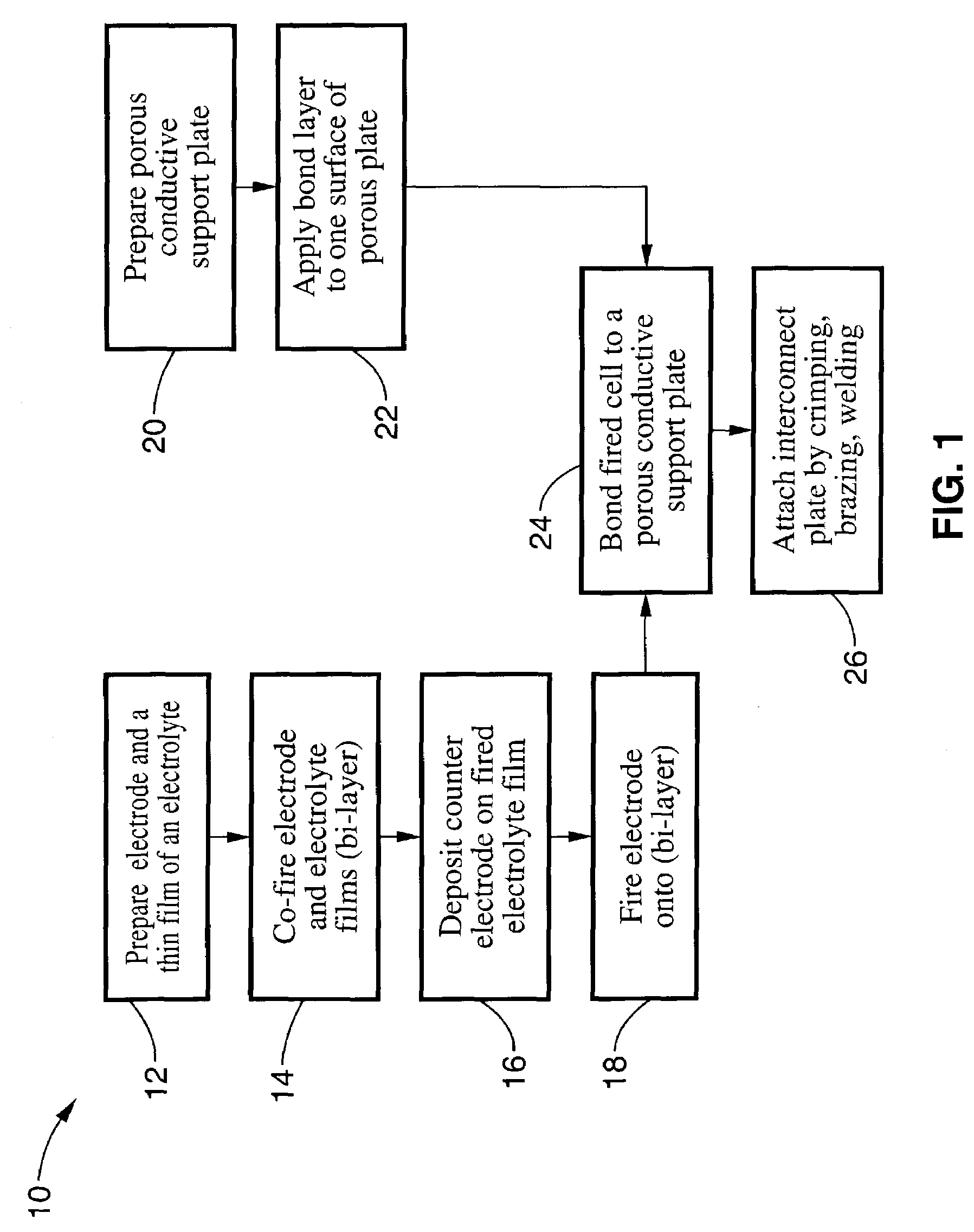Planar electrochemical device assembly
- Summary
- Abstract
- Description
- Claims
- Application Information
AI Technical Summary
Benefits of technology
Problems solved by technology
Method used
Image
Examples
Embodiment Construction
[0048]Referring more specifically to the drawings, for illustrative purposes the present invention is embodied in the method shown in FIG. 1 and the devices generally shown in FIG. 2 through FIG. 8. It will be appreciated that the apparatus may vary as to configuration and as to details of the parts, and that the method may vary as to the specific steps and sequence, without departing from the basic concepts as disclosed herein.
[0049]Referring first to FIG. 1, an embodiment of a method of fabricating an electrochemical device assembly according to the present invention will now be described. In the embodiment that will be described, a fuel cell will be used as an exemplary electrochemical device. It will be appreciated, however, that other types of electrochemical devices can be fabricated in accordance with method of the present invention.
[0050]In the method illustrated in FIG. 1, a prefabricated electrochemical device is bonded to a porous electrically conductive support plate by ...
PUM
| Property | Measurement | Unit |
|---|---|---|
| Fraction | aaaaa | aaaaa |
| Electrical conductivity | aaaaa | aaaaa |
| Electrical conductor | aaaaa | aaaaa |
Abstract
Description
Claims
Application Information
 Login to View More
Login to View More - R&D
- Intellectual Property
- Life Sciences
- Materials
- Tech Scout
- Unparalleled Data Quality
- Higher Quality Content
- 60% Fewer Hallucinations
Browse by: Latest US Patents, China's latest patents, Technical Efficacy Thesaurus, Application Domain, Technology Topic, Popular Technical Reports.
© 2025 PatSnap. All rights reserved.Legal|Privacy policy|Modern Slavery Act Transparency Statement|Sitemap|About US| Contact US: help@patsnap.com



